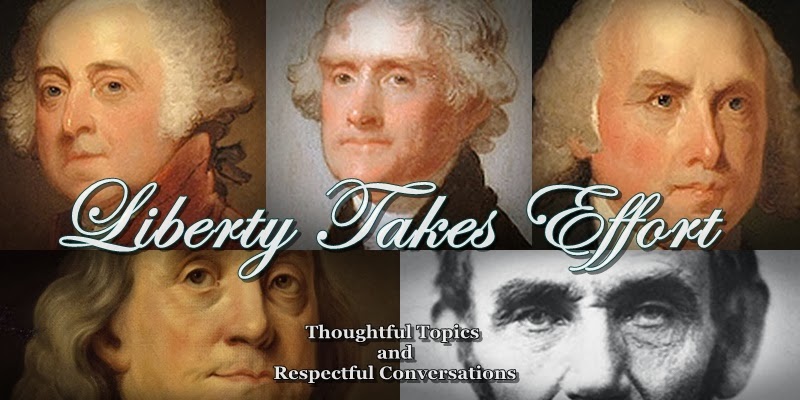Wednesday, June 4, 2014
Afghanistan Withdrawal: President Obama gets it right
Monday, June 2, 2014
Sgt. Bergdahl Prisoner Exchange
Threats to Liberty - Expanding Government
Sunday, June 1, 2014
Threats to Liberty – Federalism Diminished Through Aid
Federalism is the concept of shared sovereignty whereby constituent parts (states) join with a central governing authority (U.S.) in a union. There was great debate among the Founders about how much power the federal government should have. They knew it needed to be more than it was under the Articles of Confederation, but they also did not want a unitary state where all power is held centrally and distributed to lesser administrative units as the central authority sees fit.
The federal government, though intended as limited and specific in its powers, has grown exponentially since the founding of the United States, particularly in the 20th and 21st centuries. There are differing opinions about the value of a dominant federal government, but it is clear that the structural check on the growth of federal power – Federalism - is substantially diminished and the United States is de facto becoming a unitary state.
The federal government was envisioned by the founders and framed within the Constitution as limited in its powers. The federal system itself, whereby power was divided between the national government and the states was a mechanism to check the power of the national government. The Tenth Amendment to the Constitution affirms specifically this principle, stating, “The powers not delegated to the United States by the Constitution, nor prohibited by it to the States, are reserved to the States respectively, or to the people.”
Over the course of the last 100 years relative power has tilted to the federal government. State governments are growing in size, but they are weakened relative to the federal government in large part by dependence on federal aid and submission to the coercion of the strings attached to it. The states have largely become an extension of the federal government.
For example, the Commonwealth of Massachusetts adopted the federal Common Core educational curriculum in 2010 despite the clear success of a curriculum and assessment system implemented in the 1990s that has led to Massachusetts ranking at the top of educational performance for decades. Why - because access to federal education funds were contingent on adopting the Common Core.
The diminution of the states began in earnest in 1913 with the passage of the Sixteenth Amendment to the Constitution that established the income tax. Unprecedented growth spawned by the inflow of revenues and creation of aid programs for states expanded further in the New Deal of the 1930s, the Great Society programs of the 1960s.
According to the non-partisan State Budget Solutions, “states received $5.27 trillion from the federal government since the start of the 21st century. Since 2001, 34 states saw over 30 percent of all their collected general revenue come from the federal government” and the trend is of increasing dependence. The federal system is at risk when states are dependent on the federal government and must accept the strings that accompany those funds.
